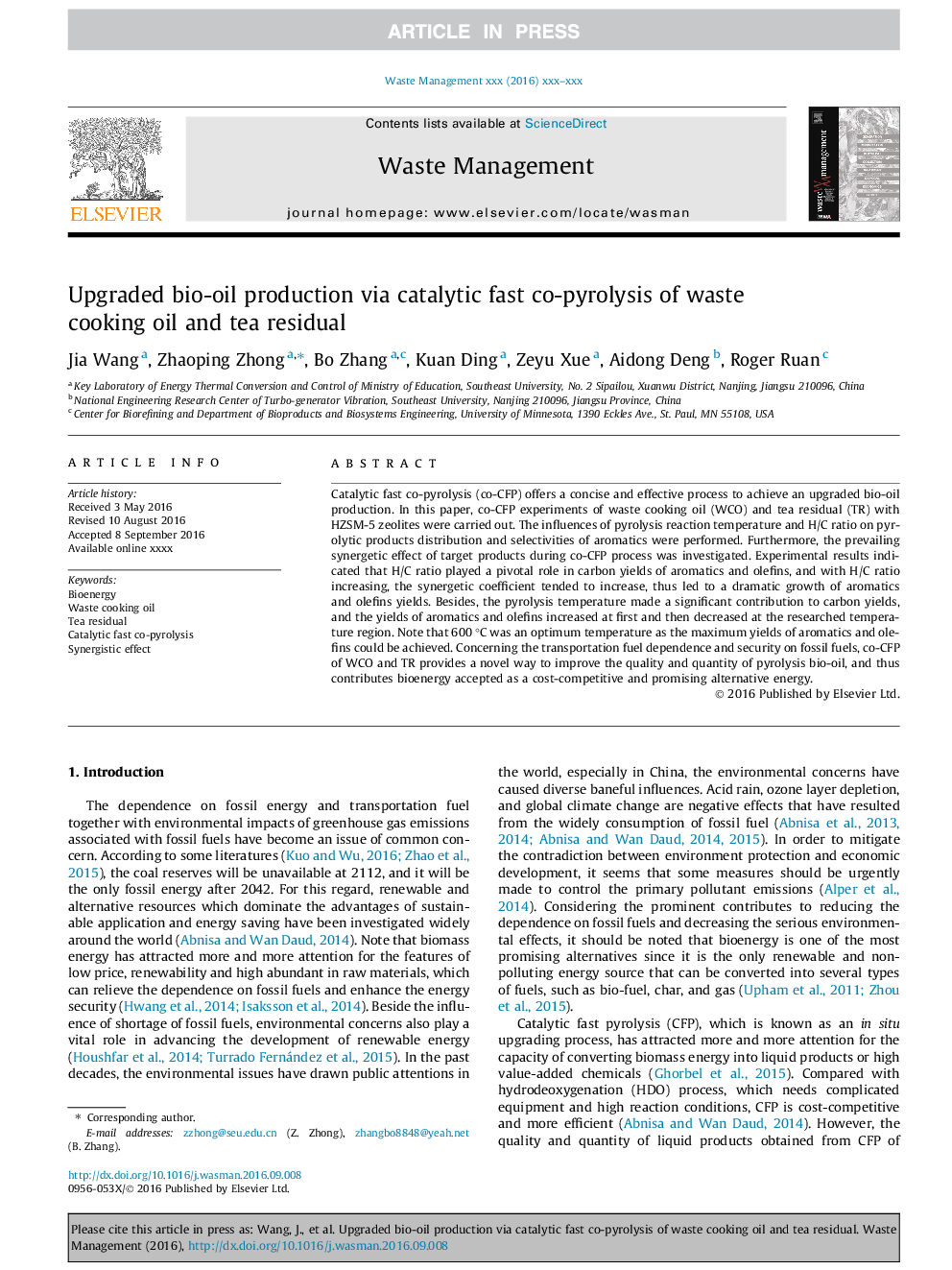| Article ID | Journal | Published Year | Pages | File Type |
|---|---|---|---|---|
| 5756797 | Waste Management | 2017 | 6 Pages |
Abstract
Catalytic fast co-pyrolysis (co-CFP) offers a concise and effective process to achieve an upgraded bio-oil production. In this paper, co-CFP experiments of waste cooking oil (WCO) and tea residual (TR) with HZSM-5 zeolites were carried out. The influences of pyrolysis reaction temperature and H/C ratio on pyrolytic products distribution and selectivities of aromatics were performed. Furthermore, the prevailing synergetic effect of target products during co-CFP process was investigated. Experimental results indicated that H/C ratio played a pivotal role in carbon yields of aromatics and olefins, and with H/C ratio increasing, the synergetic coefficient tended to increase, thus led to a dramatic growth of aromatics and olefins yields. Besides, the pyrolysis temperature made a significant contribution to carbon yields, and the yields of aromatics and olefins increased at first and then decreased at the researched temperature region. Note that 600 °C was an optimum temperature as the maximum yields of aromatics and olefins could be achieved. Concerning the transportation fuel dependence and security on fossil fuels, co-CFP of WCO and TR provides a novel way to improve the quality and quantity of pyrolysis bio-oil, and thus contributes bioenergy accepted as a cost-competitive and promising alternative energy.
Related Topics
Physical Sciences and Engineering
Earth and Planetary Sciences
Geotechnical Engineering and Engineering Geology
Authors
Jia Wang, Zhaoping Zhong, Bo Zhang, Kuan Ding, Zeyu Xue, Aidong Deng, Roger Ruan,
